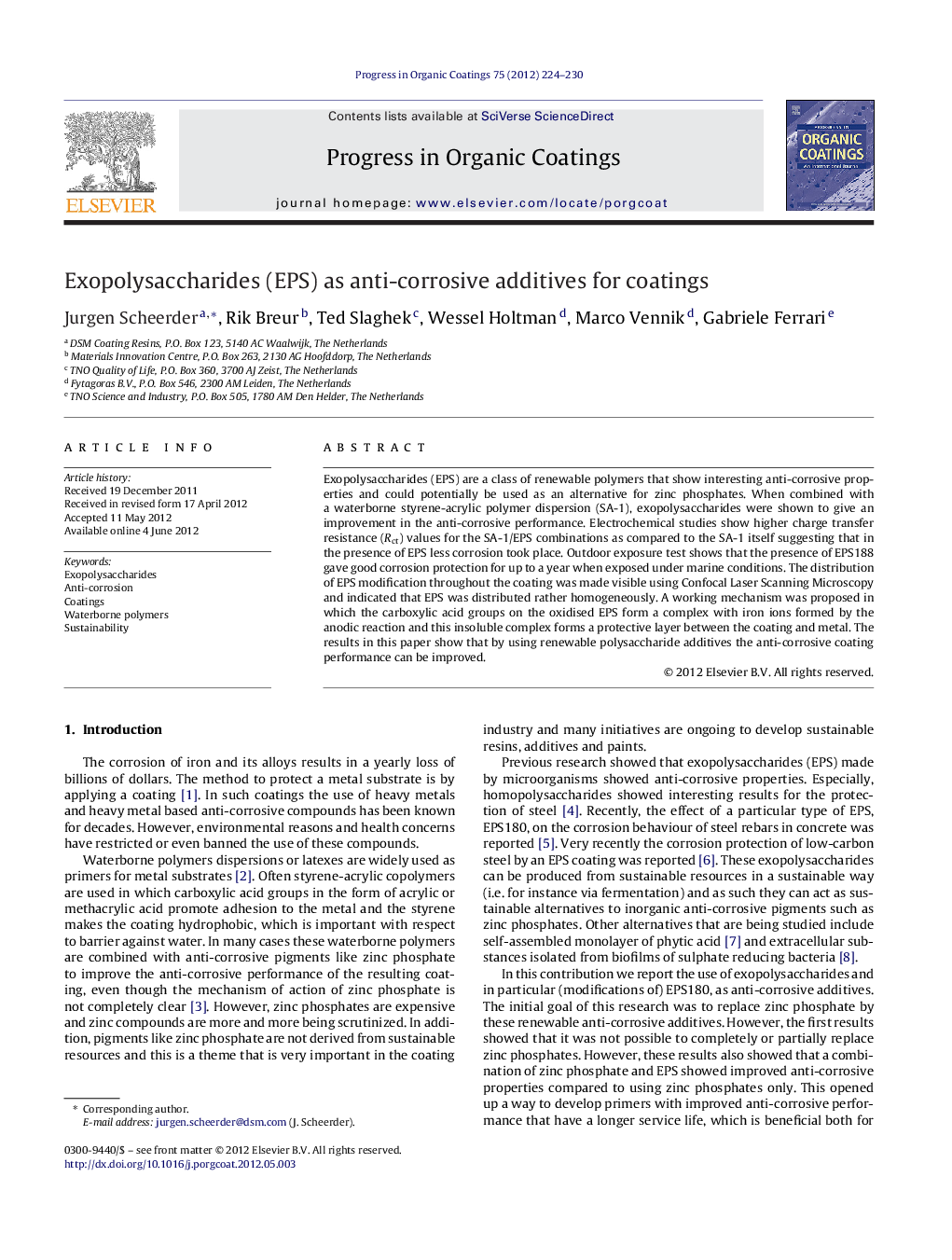| Article ID | Journal | Published Year | Pages | File Type |
|---|---|---|---|---|
| 693205 | Progress in Organic Coatings | 2012 | 7 Pages |
Exopolysaccharides (EPS) are a class of renewable polymers that show interesting anti-corrosive properties and could potentially be used as an alternative for zinc phosphates. When combined with a waterborne styrene-acrylic polymer dispersion (SA-1), exopolysaccharides were shown to give an improvement in the anti-corrosive performance. Electrochemical studies show higher charge transfer resistance (Rct) values for the SA-1/EPS combinations as compared to the SA-1 itself suggesting that in the presence of EPS less corrosion took place. Outdoor exposure test shows that the presence of EPS188 gave good corrosion protection for up to a year when exposed under marine conditions. The distribution of EPS modification throughout the coating was made visible using Confocal Laser Scanning Microscopy and indicated that EPS was distributed rather homogeneously. A working mechanism was proposed in which the carboxylic acid groups on the oxidised EPS form a complex with iron ions formed by the anodic reaction and this insoluble complex forms a protective layer between the coating and metal. The results in this paper show that by using renewable polysaccharide additives the anti-corrosive coating performance can be improved.
Graphical abstractFigure optionsDownload full-size imageDownload as PowerPoint slideHighlight► EPS improve the anti-corrosive performance of styrene-acrylic coatings. ► Electrochemical studies show that less corrosion takes place in presence of EPS. ► The distribution of EPS throughout the coating was rather homogeneous. ► EPS gave good corrosion protection for two and half year outdoor exposure. ► EPS complex Fe ions and this insoluble complex protects against corrosion.
